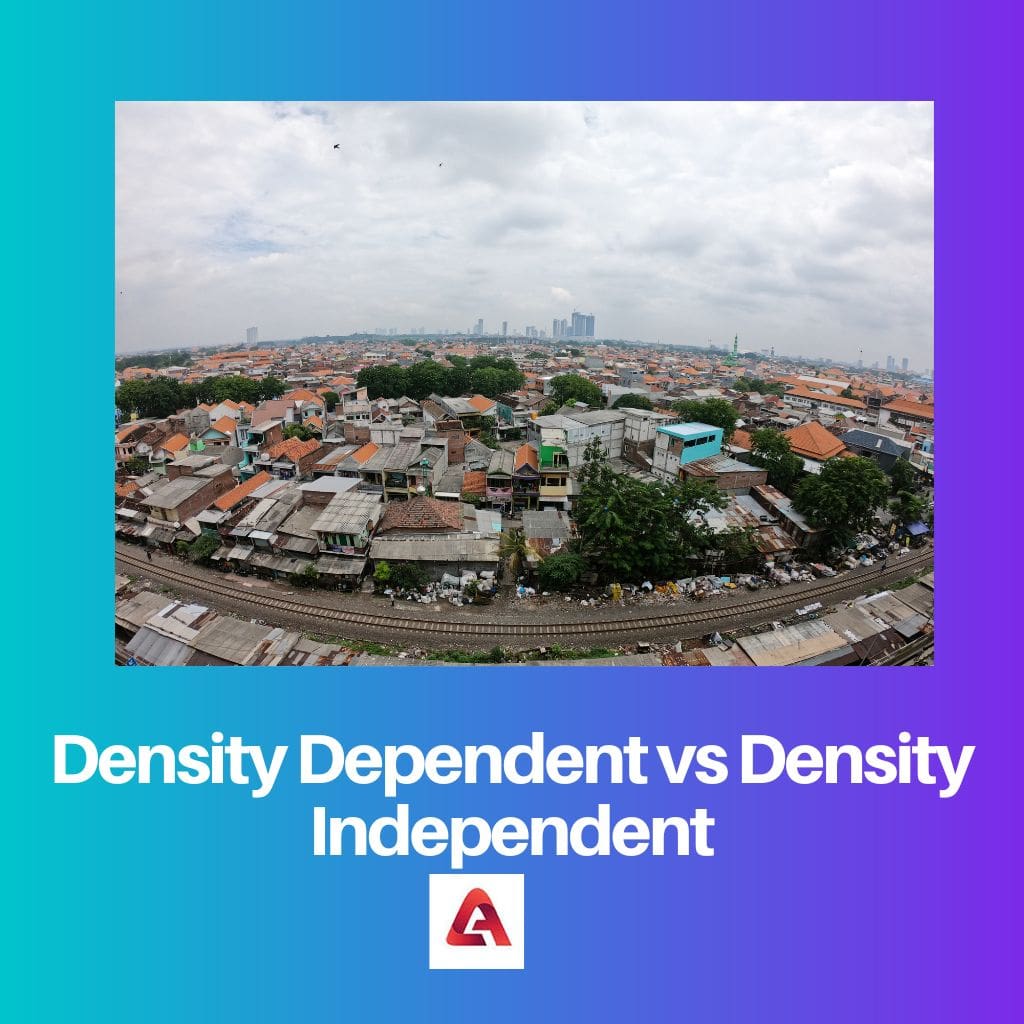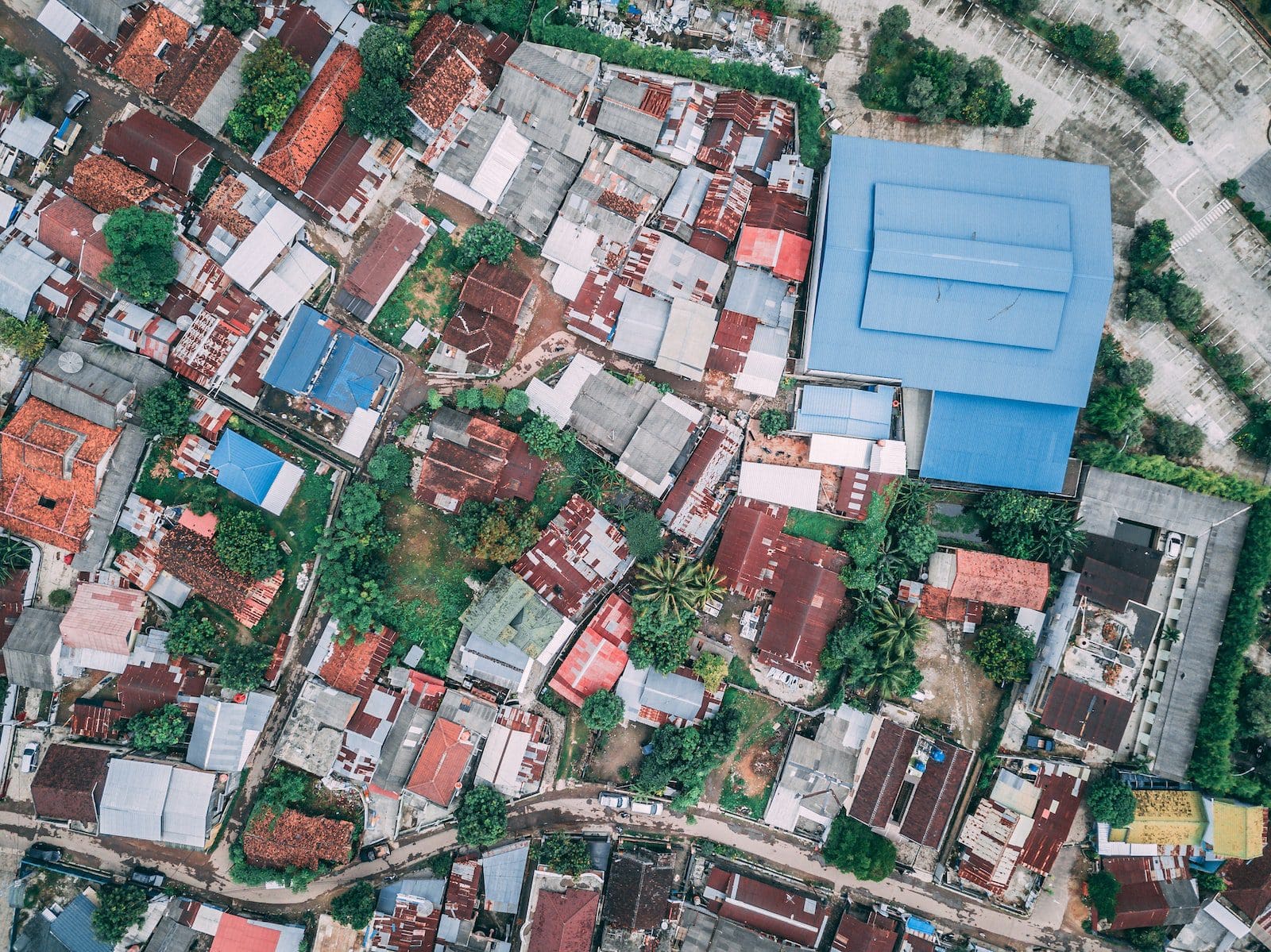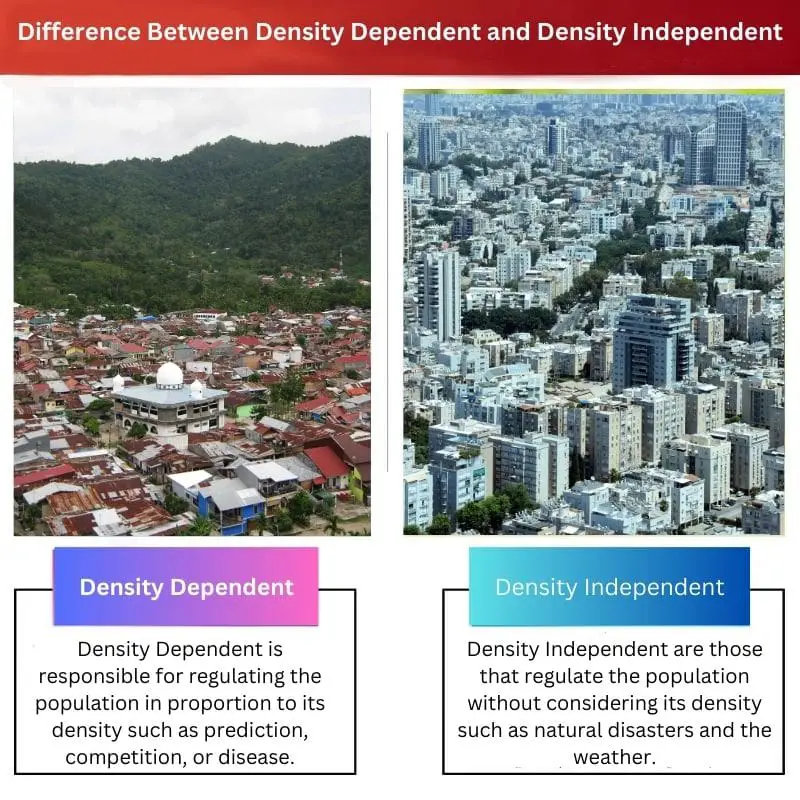Density-dependent factors in ecology are those that affect a population in relation to its size, such as competition for resources, predation, and disease spread, with their impact increasing as population density rises. In contrast, density-independent factors, such as natural disasters or weather extremes, exert their influence regardless of population size, causing sudden and indiscriminate effects on populations.
Key Takeaways
- Density-dependent factors are biotic factors that affect the growth of a population as the population size increases.
- Density-independent factors are abiotic factors that affect the growth of a population regardless of its size.
- While density-dependent factors include predation, disease, and competition, density-independent factors include natural disasters, weather, and human activities.
Density Dependent vs. Density Independent
The difference between Density Dependent and Density Independent is that Density Dependent regulates the population proportionately, whereas Density Independent regulates the population without considering its density.

Density Dependent regulates the population in proportion to its density, such as prediction, competition, or disease. It causes the population to decrease or increase depending on how it affects the ecosystem and operates in a large population.
Density Independent regulates the population without considering its density, such as natural disasters and the weather. The measurement of population control operates on small and large populations and is not bored on density.
Natural disasters such as storms, drought, floods, extreme temperatures, fire, and distinction of organisms can cause a decrease in their population.
Comparison Table
| Feature | Density Dependent | Density Independent |
|---|---|---|
| Definition | Limiting factors that affect a population more as its density increases | Limiting factors that affect a population regardless of its density |
| Examples | Predation, competition for resources (food, water, shelter), disease, waste accumulation | Natural disasters (floods, wildfires, hurricanes), extreme weather events (droughts, blizzards), pollution |
| Mechanism of impact | Increased competition for resources leads to: * Reduced food availability * Increased disease transmission * Increased predation pressure | Events directly kill or harm individuals regardless of population density |
| Effect on population growth | Slows down or stops population growth as density increases | Suddenly reduces population size regardless of density |
| Predictability | More predictable as population density can be monitored | Less predictable as they occur outside the control of the population |
| Examples of real-world situations | * Predators (e.g., lions hunting gazelles) having more difficulty finding prey as gazelle populations decline. * Diseases spreading more easily in crowded populations (e.g., lice infestations in human populations). * Competition for food becoming more intense as resources become scarce (e.g., birds competing for insects during breeding season). | * Forest fire wiping out a large portion of a forest ecosystem, regardless of the animal or plant populations present. * Flooding drowning individuals in low-lying areas, regardless of population density. * Sudden temperature drop freezing and killing organisms that are not adapted to the cold. |
What is Density Dependent?
Density-dependent factors play a crucial role in regulating population dynamics within ecosystems. These factors directly influence populations in relation to their density, meaning their impact becomes more pronounced as population density increases. Understanding density-dependent mechanisms is essential for comprehending the intricate dynamics of ecological systems.
Examples of Density Dependent Factors
- Competition for Resources:
- As population density rises, individuals within a species compete more intensely for limited resources such as food, water, and space. This competition can lead to reduced access to essential resources, affecting growth rates, reproductive success, and overall population size.
- Predation:
- Predation exhibits density-dependent effects. Higher population densities can attract predators, leading to increased predation rates. This can exert regulatory pressure on the prey population, keeping it in check and preventing overpopulation.
- Disease Spread:
- Disease transmission is influenced by population density. In dense populations, pathogens can spread more easily from one individual to another, leading to higher infection rates and potentially causing significant mortality. Disease outbreaks can thus act as a regulatory mechanism on population size.
- Intraspecific Interactions:
- Within-species interactions, such as territoriality, aggression, and mating behaviors, can intensify as population density increases. These interactions may influence reproductive success, survival rates, and overall population dynamics.

What is Density Independent?
Density-independent factors are environmental variables that exert their influence on populations irrespective of their density. Unlike density-dependent factors, which intensify as population density increases, density-independent factors affect populations in a manner unrelated to their size. Understanding these factors is crucial for comprehending the broader ecological dynamics and population fluctuations within ecosystems.
Examples of Density Independent Factors
- Natural Disasters:
- Events such as hurricanes, wildfires, floods, and earthquakes can have catastrophic effects on populations regardless of their density. These events can cause immediate and indiscriminate mortality, habitat destruction, and disruption of essential resources, leading to population declines or localized extinctions.
- Weather Extremes:
- Extreme weather events, including droughts, heatwaves, cold snaps, and storms, can impact populations irrespective of their size. Temperature fluctuations, precipitation patterns, and other climatic variables can directly affect survival, reproduction, and resource availability, influencing population dynamics across various taxa.
- Pollution:
- Environmental pollutants, such as chemicals, heavy metals, and toxins, can adversely affect populations regardless of their density. Pollution can contaminate habitats, degrade water and air quality, and compromise food sources, leading to physiological stress, reduced reproductive success, and population declines.
- Habitat Loss and Fragmentation:
- Human-induced alterations to habitats, such as deforestation, urbanization, and habitat fragmentation, can negatively impact populations independent of their density. Loss of suitable habitat, disruption of connectivity, and degradation of ecosystem integrity can threaten species persistence and biodiversity.

Main Differences Between Density Dependent and Density Independent
- Definition:
- Density-dependent factors are biological or environmental influences whose effects on population dynamics vary depending on the population’s size or density.
- Density-independent factors are biological or environmental influences that affect population dynamics regardless of the population’s size or density.
- Impact on Population:
- Density-dependent factors have a stronger impact as population density increases. Examples include competition for resources, predation, disease transmission, and territorial behavior.
- Density-independent factors affect populations irrespective of their density levels. These factors include natural disasters (e.g., hurricanes, floods), temperature extremes, pollution, and habitat destruction.
- Regulation Mechanisms:
- Density-dependent factors act as regulatory mechanisms that help stabilize populations near carrying capacity. As population density increases, these factors can limit population growth, leading to a decrease in birth rates, an increase in mortality rates, or both.
- Density-independent factors can cause abrupt and significant changes in population size, resulting in population declines or fluctuations. These factors may lead to population crashes or extinctions, especially if the population is already stressed by other factors.
- Examples:
- Density-dependent factors: Competition for food among individuals in a crowded population of herbivores, spread of disease in dense populations of animals, increased predation risk as prey populations become more concentrated.
- Density-independent factors: Severe weather events such as droughts or wildfires, habitat destruction due to human activities, chemical pollution affecting an ecosystem, sudden temperature fluctuations impacting sensitive species.

- https://www.nrcresearchpress.com/doi/abs/10.1139/f07-111
- https://onlinelibrary.wiley.com/doi/abs/10.1111/j.1600-0706.2008.16872.x

This is a well-articulated breakdown of an important ecological concept.
Absolutely, it provides a comprehensive understanding of population dynamics.
A very informative post. Thank you.
Indeed, it is. There are so many factors that play a part in regulating population growth.
This post is eye-opening. It’s a crucial topic to understand.
Yes, we need to consider them more carefully in order to maintain balance.
Absolutely crucial. The impact of these factors cannot be overstated.
An insightful exploration. It calls for serious deliberation on the implications of these factors.
Absolutely, the consequences can be far-reaching.
Indeed, the interconnectedness of these factors is vital to consider.
This post has shed light on important issues that go unnoticed.
Absolutely. It’s vital to be conscious of these factors.
A thought-provoking post. The importance of considering these factors cannot be overstated.
Absolutely, they are pivotal in understanding ecological dynamics.
Indeed, they should be at the forefront of discussions on population growth.
An essential piece on population dynamics.
Indeed, it’s a critical reading on the topic.
This is a topic more people should be aware of.
Yes, a well-informed public is in everyone’s best interest.
Indeed, it’s crucial to raising awareness about these factors.
Fascinating read. The implications are far-reaching.
Indeed, it would be beneficial for policymakers to have a comprehensive understanding of these concepts.
Agreed, the economic and ecological repercussions are interconnected.
This made me think deeply about how these factors shape populations.
Yes, it’s a reminder of the complexities involved in regulating population growth.
Absolutely, it provides a comprehensive overview of the key concepts.